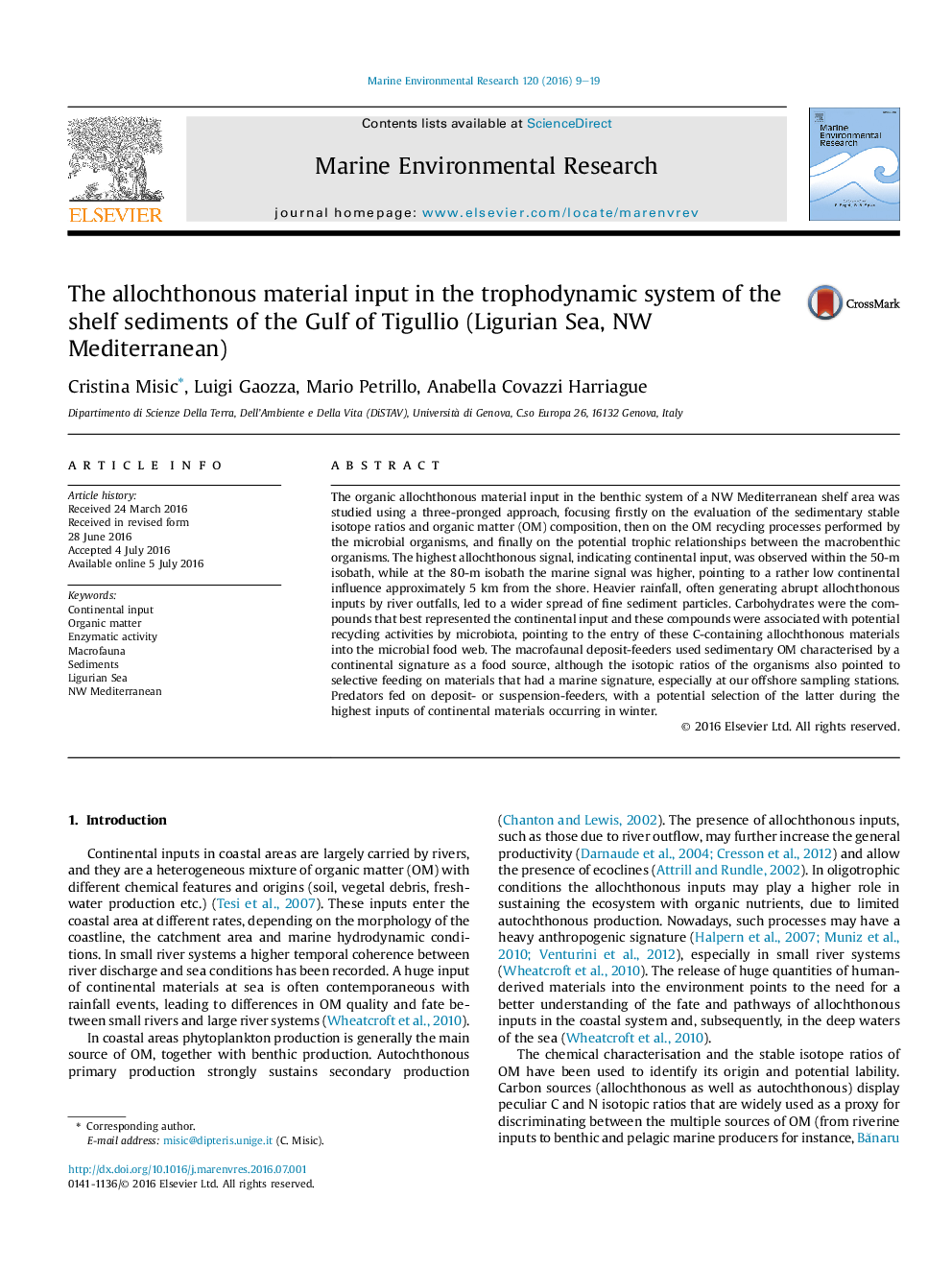| کد مقاله | کد نشریه | سال انتشار | مقاله انگلیسی | نسخه تمام متن |
|---|---|---|---|---|
| 4550574 | 1627563 | 2016 | 11 صفحه PDF | دانلود رایگان |

• The input of continental organic matter (OM) was studied in the trophodynamic system of a shelf area (NW Mediterranean).
• Stable isotopic composition and biochemical components of sedimentary OM were used as input proxies.
• The highest continental influence was observed within the 50-m isobaths (3–4 km from the coast).
• Allochthonous carbohydrates were recycled by microbiota, allowing terrigenous OM entrance in the lower food web.
• Macrofaunal organisms consumed allochthonous OM, but also selected autochthonous OM and prey.
The organic allochthonous material input in the benthic system of a NW Mediterranean shelf area was studied using a three-pronged approach, focusing firstly on the evaluation of the sedimentary stable isotope ratios and organic matter (OM) composition, then on the OM recycling processes performed by the microbial organisms, and finally on the potential trophic relationships between the macrobenthic organisms. The highest allochthonous signal, indicating continental input, was observed within the 50-m isobath, while at the 80-m isobath the marine signal was higher, pointing to a rather low continental influence approximately 5 km from the shore. Heavier rainfall, often generating abrupt allochthonous inputs by river outfalls, led to a wider spread of fine sediment particles. Carbohydrates were the compounds that best represented the continental input and these compounds were associated with potential recycling activities by microbiota, pointing to the entry of these C-containing allochthonous materials into the microbial food web. The macrofaunal deposit-feeders used sedimentary OM characterised by a continental signature as a food source, although the isotopic ratios of the organisms also pointed to selective feeding on materials that had a marine signature, especially at our offshore sampling stations. Predators fed on deposit- or suspension-feeders, with a potential selection of the latter during the highest inputs of continental materials occurring in winter.
Journal: Marine Environmental Research - Volume 120, September 2016, Pages 9–19